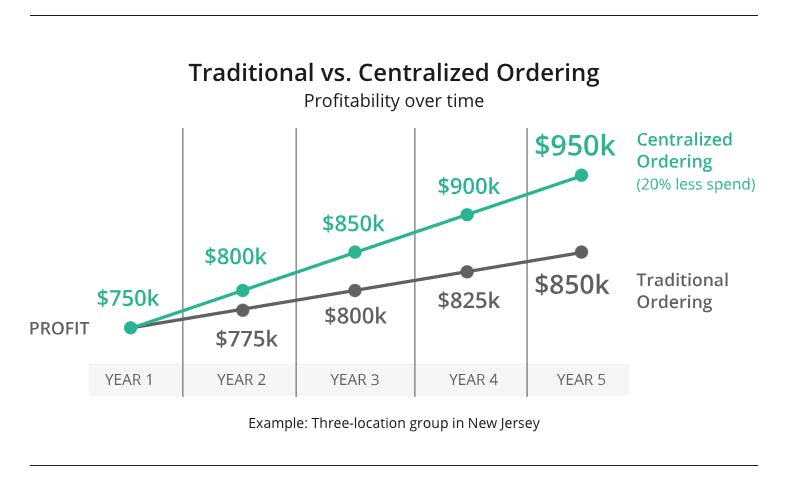
Introduction
It’s no secret that the dental labor shortage is a serious issue. The ADA states that 66% of dentists surveyed mentioned staffing as one of the top challenges they face in 2023. So how do practices combat the staffing shortage and retain top talent? Let’s walk through the steps.
Managing a dental practice requires more than just clinical expertise - it requires effective team and practice management. Staffing challenges, such as recruitment, retention, training, and more, have long been a concern. However, implementing efficient systems can help you overcome these challenges and create a positive work environment.
Efficient team management involves creating an environment that fosters loyalty, trust, motivation, and productivity among staff members. By focusing on recruiting the right talent, providing efficient onboarding, offering ongoing training and development, and leveraging technology, you can overcome staffing challenges. By doing so, your practice can improve patient care and increase the return on investment (ROI).
Recruitment
When understaffing is the issue, strategic recruitment steps are crucial. This involves crafting a well-thought-out job description with clear qualifications, responsibilities, and expectations. To expand your search beyond traditional job sites, consider using employee referral programs and social media to reach high quality candidates. Conduct adequate background checks and in-person interviews to ensure that you are making the right choice for your team.
It is necessary to think beyond clinical skills when recruiting staff. The personality fit of a candidate with the team and their communication style and attitude towards work can strongly influence their ability to provide effective care to patients. Dental practices that make use of pre-hire assessments for their potential hires can gauge these unquantifiable traits and make more informed hiring decisions.
Onboarding
The onboarding process is critical in setting new team members up for success. It involves training new hires on the practice philosophy, culture, practice norms, and job-specific skills. Providing shadowing opportunities and offering regular feedback helps boost confidence and creates a sense of loyalty towards the organization. Consider assigning a mentor to new hires to help them navigate their role and the practice more effectively.
Onboarding is also a great time to introduce new team members to other members of the practice, as they may be working closely together to provide care to patients. Encourage socialization and help them feel like they are an integral part of the team. There’s nothing like a little friendly bowing competition to bring the team closer together!
Training
Ongoing training is crucial to staff development. There are many different opportunities, such as CEs, dental conferences, and enrollment in dental courses to improve the team's knowledge and skills. Investing in your team keeps your practice ahead of the competition, helps retain staff over the long run, and ensures that your patients receive the best possible care.
In addition to external training opportunities, consider offering in-house training on new equipment or procedures. Engaging different team members to share their expertise and experience with colleagues can help up-skill the entire team and bring a sense of collaboration to the practice.
Retention
Retaining staff is critical to maintaining positive culture and practice success. Keeping staff engaged, motivated, and loyal will positively impact the productivity and profitability of the practice. Regular feedback and evaluations of employee work can help identify areas for improvement and opportunities for growth.
Offering appropriate compensation and benefits based on performance, providing a positive work-life balance, organizing team bonding events, and ensuring office management offers enough support and resources are also effective retention strategies. Having a transparent performance review process aids in setting goals and expectations, and can also enable a healthy feedback loop between staff and management.
Office Management
Efficient office management enhances staff satisfaction and boosts productivity. Proper scheduling, communication, feedback, and clear expectations must be outlined for all team members. Many practices have found that using technology can help automate routine tasks and improve efficiency.
Embracing Technology and Automation
Leveraging technology is an essential part of managing dental staffing challenges. Adopting technology has multiple benefits
- It improves the efficiency of day to day work for existing team which will improve staff retention
- In the case of turnover, new team members can more easily get up to speed using centralized solutions
- It enables collaboration across team members.
Tech solutions can be used to help with tasks like patient record management, appointment scheduling, supply ordering, and billing. Quick and efficient communication tools like instant messaging facilitate productive collaboration among staff members. Implementing digital tools for managing tasks such as payroll, inventory, and accounting can save time and reduce the likelihood of errors.
Moreover, automation can streamline routine tasks, allowing staff members to focus on providing quality care to patients. For instance, centralized supply ordering through technology frees up the administrative workload and ensures more time for clinical work. Check out how Smilen Dental Group has maximized its productivity through technology.
Conclusion
Running a successful dental practice is not just based on clinical skills alone. Follow these simple steps to increase ROI and improve staff management::
- Invest in efficient staffing and tech systems especially in front office management
- Implement recruitment strategies
- Create efficient onboarding, training plans, and retention strategies
- Take proactive steps towards staff development and equip your team with the tools to succeed
Interested in learning more about how to adopt tech to take the headache out of supply ordering?






